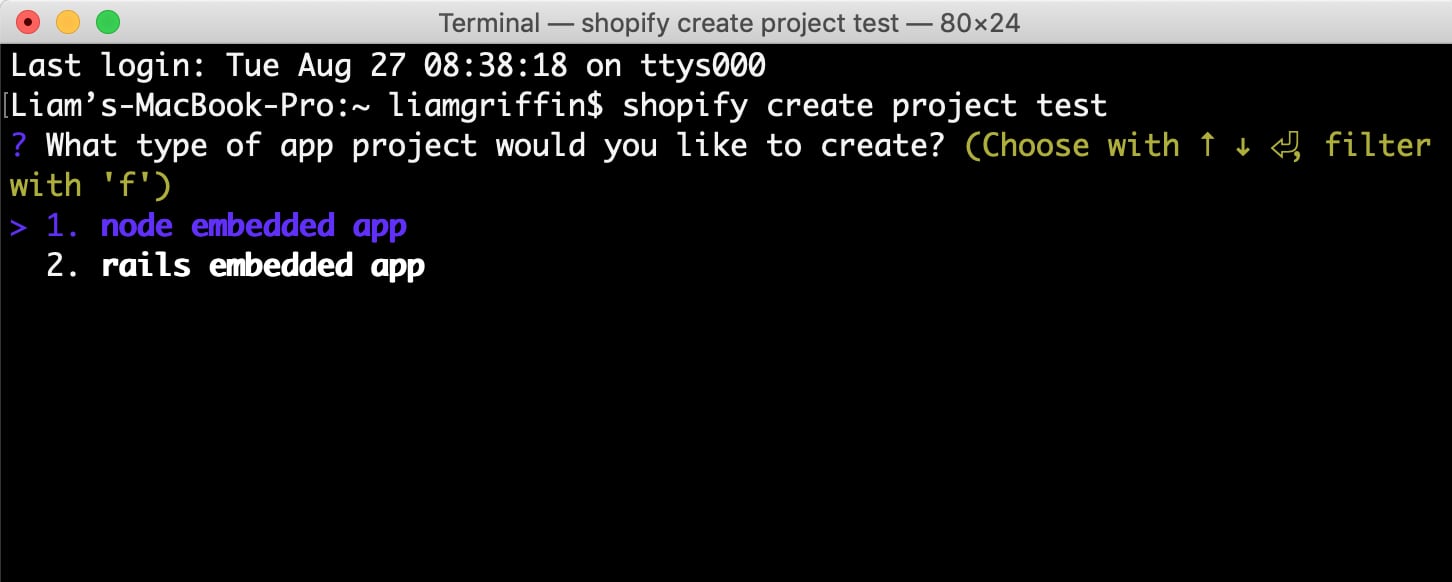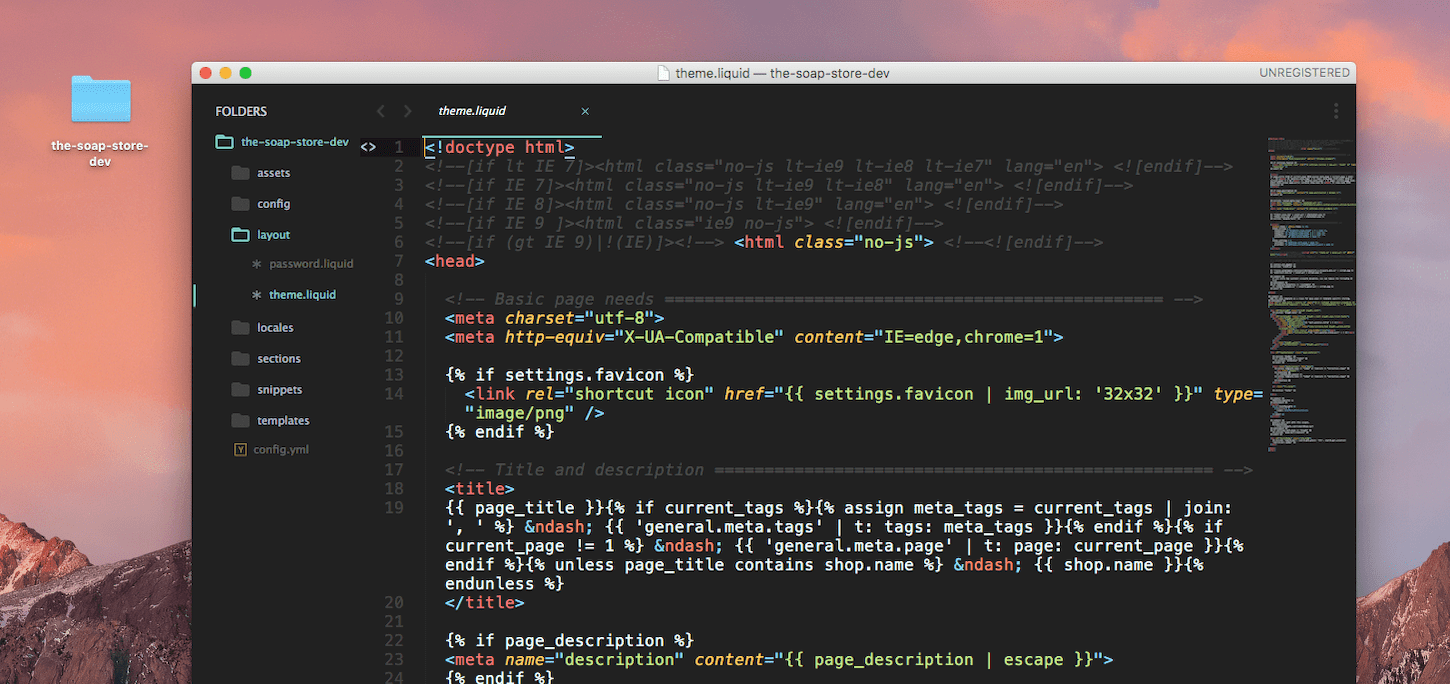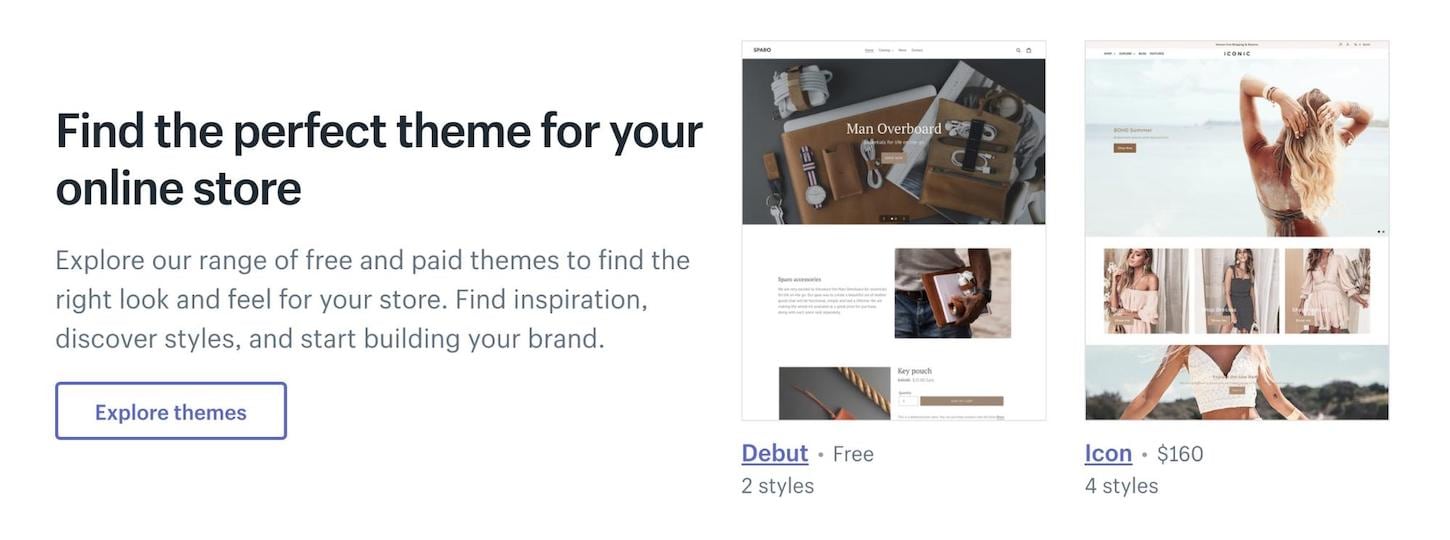Announcing Online Store 2.0
Online Store 2.0 is an end-to-end overhaul of how themes are built at Shopify, launched June 2021. While the information in the following article is still correct, it doesn't account for Online Store 2.0 best practices, and may not include references to recent features or functionality. To learn more about how to build with Online Store 2.0, visit our updated documentation.
Visit docsShopify is an exciting commerce platform for developers—with over 800,000 active merchants, it’s a vibrant community that presents a ton of opportunities for those looking to earn revenue by helping merchants solve problems. As a front end or backend developer, you can assist merchants with everything from theme development and customization, to building apps, store design, photography, website security, and so much more.
With so many options in front of you, it can sometimes be difficult to know how to start working with Shopify. Luckily, there are countless free resources out there to help you get started with the platform, and streamline your workflow.
Here’s a rundown of some of the best free Shopify front end development tools to help you with your client work.
Or, if you're on the prototyping stage of development, visit our post on the best prototyping tools.
1. Polaris

Creating and selling a Shopify App is a powerful method for adding new features, services, and plugins to merchant’s online store. But making your Shopify App look like native components can be time consuming—that’s where Polaris comes in.
Polaris is Shopify’s design system, and includes a React library with vanilla HTML/CSS options as well as a downloadable UI kit which empowers developers to create consistent experiences for their apps. More than just a developer’s toolkit, the resources in Polaris’s style guide articulate UX best practices and rationale to ensure a unified visual language.
The guidelines also offer advice on how to build apps that follow accessibility best practices, as well as looking at internationalization considerations to allow your interfaces to be used in every part of the world. Recently, we published our experience values which outline our shared principles to helps define what makes a great experience for our merchants.
Find your new favorite Markdown editor in our roundup.
2. Shopify App CLI

The process for setting up the scaffolding code during app development can be time intensive and requires a number of steps before you can get started adding functionality to your app. Currently in beta, the Shopify App CLI is a command-line tool that was designed to reduce the amount of work needed to get an app up and running, so you can focus on building out features for the app.
The CLI tool not only automates many routine tasks in the development process, but also lets you quickly add common features to your app, including billing models and webhooks. Once installed, the create command will scaffold a new Shopify App in your current active directory and generate all the necessary starter files.
The Shopify App CLI can also add dummy data to your development store so you can test your app more thoroughly. By populating your development store with dummy products, customers, and orders, you can create a more realistic testing environment using this tool.
You might also like: Creating an Accessible Pagination with Liquid.
3. Theme Kit

Shopify comes bundled with a powerful online theme editor, but have you ever wanted to work locally with your favorite code editor? Theme Kit was created in-house by Shopify’s theme development team and is a cross-platform tool for building Shopify Themes using a local code editor.
Once Theme Kit is installed, developers can watch for local changes to theme files, and upload automatically to Shopify, as well as upload themes to multiple environments. Theme Kit is compatible with Windows, Linux, and OS X, and can be used to connect with an existing theme or to create a new theme from scratch.
To get started with Theme Kit, check out our article with a step-by-step process.
Tip: When working with themes, one of the most requested features by merchants is zooming on product images. Learn how to use jQuery image zoom and JavaScript Zoom to bring this functionality to your clients.
4. Slate

Update as of January 2020: Please note that Shopify has ended support for Slate. You can continue to use the tool and fork the repo to suit your own needs, however you do so at your own risk. You can learn more about our reasons for ending Slate support on the Slate GitHub page.
Similar to Theme Kit above, Slate is designed to assist theme developers with their workflow and speed up the process of developing, testing, and deploying themes to Shopify. Slate guides developers by providing a tested workflow and opinionated development toolkit, while also accommodating more established developers through advanced configuration.
By default, Slate generates a new project using the Shopify Starter Theme, but developers can create their own starter theme which is specifically structured to be used as a starting point for a new project. Slate also uses Theme Kit to watch and update themes, so you can use Slate as part of your theme editing workflow.
Slate's build script also compiles the theme so that it is fully optimized to run in production. These optimizations include JavaScript, CSS, and Minified HTML. Learn how to create your own starter theme and connect it with a GitHub repo in this blog article.
You might also like: The Essential List of Resources for Shopify Theme Development.
5. Shopify Partner Academy

Shopify Partner Academy is an online training and certification program that can be accessed from your Partner Dashboard. The online courses cover a wide range of topics including theme and app development, as well as non-technical subjects such as project management, marketing, and store operations.
Shopify Partner Academy also allows developers to test their knowledge and earn certifications that can be used to prove your expertise in theme or app development. Once these exams are passed, a certification badge will appear in your Partner Dashboard.
With 22 courses, exams, and study guides, Shopify Partner Academy is a great resource to build on your existing abilities, or diversify your offering by learning a new skill.
6. Liquid Cheat Sheet

The backbone of all Shopify Themes is Liquid, a templating language that uses a combination of tags, objects, and filters to load dynamic Shopify content. The Liquid Cheat Sheet is a searchable database of all the Liquid objects, tags, and filters, demonstrates simple examples, and links to reference documentation.
If you’re new to Liquid and theming, the cheat sheet will help you quickly locate any Liquid elements, and will become an integral part of your theme development workflow. Recently this resource has been updated to include new additions to Liquid, so developers have access to examples for all Liquid elements that are in production.
Personally, this is one of the most useful tools that I use on a regular basis when working on a Shopify store. Having the cheat sheet open on a tab when editing a theme’s code allows me to quickly check the attributes and properties of a Liquid element. One for your bookmarks!
7. Shopify Liquid Code Examples

Very often we learn through example, so seeing how to implement popular theme components is a great way to learn about how Shopify themes work. To help developers gain this insight, we created a library of code examples that cover all the touchpoints of an online store.
The Shopify Liquid Code Examples help to inform how various Liquid objects, properties, and filters work together as part of components within a theme. Developers can even add these examples directly into into their themes, to allow you to build and customize themes faster and more reliably.
Spread out over seven categories, the library demonstrates some of the most crucial store elements such as accessible pagination, product pages, and checkout forms.
8. Free Shopify Themes and partner-friendly apps

Everyone likes getting a head start on a project, and with the free Shopify Themes available to you, it’s crucial that you take advantage of them to streamline your workflow.
Many of the free themes were created in-house by our talented themes team at Shopify. This means that every line of code has been optimized and these themes come bundled with advanced features. You can also use the free themes to recreate features in your own custom themes.
Furthermore, many talented partners have developed apps which are free to test in development stores. Regular charges will apply to these apps once the store is switched over to a paid plan, but they can be a useful learning resource when applied to development stores.
For example, there’s an app to customize storefront search, edit metafields, add product reviews, connect with fulfillment companies, and more. You can browse the partner-friendly Shopify apps in the Shopify App Store.
You might also like: 22 Basic UX Laws That Every Designer Should Know.
Powerful Shopify resources to add to your tool belt
As designers and developers, it’s important to look for resources that can help us perform our duties more efficiently. Stay up to date with the Shopify Web Design and Development Blog to keep in the loop and help you on your Shopify journey.
Read more
- The Essential List of Resources for Shopify Theme Development
- 8 Development Tips for Building Better Custom Shopify Sites
- Introducing Online Store 2.0: What it Means For Developers
- 10 Ways to Create Delightful and User-Friendly Web Animation
- How to Build a Shopify App: The Complete Guide
- Four Smart Reasons to Embed a Shopify Store in Your Client Websites
- Free Webinar] Developing with Shopify: Using JavaScript to Add Ecommerce to Any Website
What are your favorite front end development tools? Let us know in the comments below!

